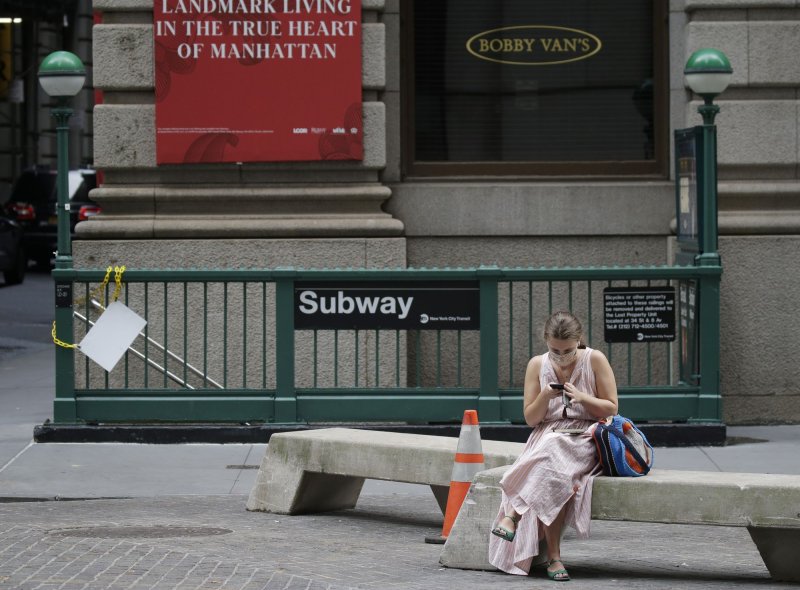Researchers say that more people in New York City -- as much as 20% of people there -- were infected with COVID-19 by March 1. File Photo by John Angelillo/UPI |
License Photo
New York City had a high rate of infection with the new coronavirus long before its first case of COVID-19 was confirmed on March 1, researchers report.
By that date, more than 1.7 million people in the city -- 20% of the population -- had already been infected, and the COVID-19 death rate was close to 1%, or 10 times deadlier than the flu.
To arrive at that conclusion, the researchers analyzed nearly 10,700 plasma samples taken between Feb. 9 and July 5, 2020. The samples were checked for the presence of antibodies to past infections of COVID-19, rather than the presence of the virus.
There was very little testing capacity in New York City at the beginning of its outbreak in early March, the researchers noted.
"We now know there were many asymptomatic and mild-to-moderate cases that likely went undetected," said senior study author Dr. Emilia Mia Sordillo, an attending physician in infectious diseases at the Icahn School of Medicine and the Mount Sinai Health System in New York City.
"In this study, we aimed to understand the dynamics of infection in the general population and in people seeking urgent care," Sordillo said in a Mount Sinai news release.
Two groups of plasma samples were tested. The first group included more than 4,100 samples from patients seen in Mount Sinai's emergency departments and from patients that were admitted to the hospital for urgent care, and was meant to detect infections in people with moderate-to-severe COVID-19 as the New York City outbreak progressed.
The second group included nearly 6,600 samples from patients seen at regular office/treatment visits, and was seen as reflecting infection rates in the general population in the city.
The study was published this week in the journal Nature.
"We show that the infection rate was relatively high during the first wave in New York, but is far from seroprevalence that might indicate community immunity (herd immunity)," said study corresponding author Florian Krammer. He's professor in vaccinology at Icahn.
"Knowing the detailed dynamics of the seroprevalence shown in this study is important for modeling seroprevalence elsewhere in the country," Krammer added.
More information
The U.S. Centers for Disease Control and Prevention has more on COVID-19.
Copyright 2020 HealthDay. All rights reserved.
![]()
















